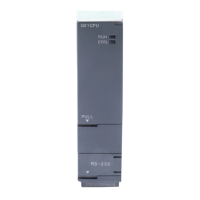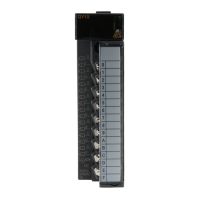6
FUNCTIONS
6.6 Remote Operation
6.6.1 Remote RUN/STOP
6
- 20
1
Overview
2
Performance
Specification
3
Sequence Program
Configuration and
Execution Conditions
4
I/O Nunber Assignment
5
Memories and Files
Handled by CPU Module
6
Functions
7
Communication with
Intelligent Function
Module
8
Parameters
6.6 Remote Operation
Remote operation changes the operating status of the CPU module by the operation
performed from outside (e.g. GX Developer, external device using MC protocol, link
dedicated instruction of MELSECNET/H network module, remote contact).
The following four options are available for remote operations:
• Remote RUN/STOP : Section 6.6.1
• Remote PAUSE : Section 6.6.2
• Remote RESET : Section 6.6.3
• Remote LATCH CLEAR : Section 6.6.4
6.6.1 Remote RUN/STOP
(1) Definition of Remote RUN/STOP
The remote RUN/STOP performs RUN/STOP of the CPU module externally with the
CPU module RUN/STOP switch (RUN/STOP/RESET switch for the Basic model
QCPU) at RUN.
(2) Applications of remote RUN/STOP
Using remote RUN/STOP for the following remote operations are useful:
• When the CPU module is at a position out of reach
• When performing RUN/STOP of the control board CPU module externally
(3) Calculations during Remote RUN/STOP
The program calculation that performs remote RUN/STOP is as follows:
(a) Remote STOP
Executes the program to the END instruction and enters the STOP status.
(b) Remote RUN
When remote RUN is performed while in the STOP status using remote STOP, the
status changes to RUN and executes the program from step 0.

